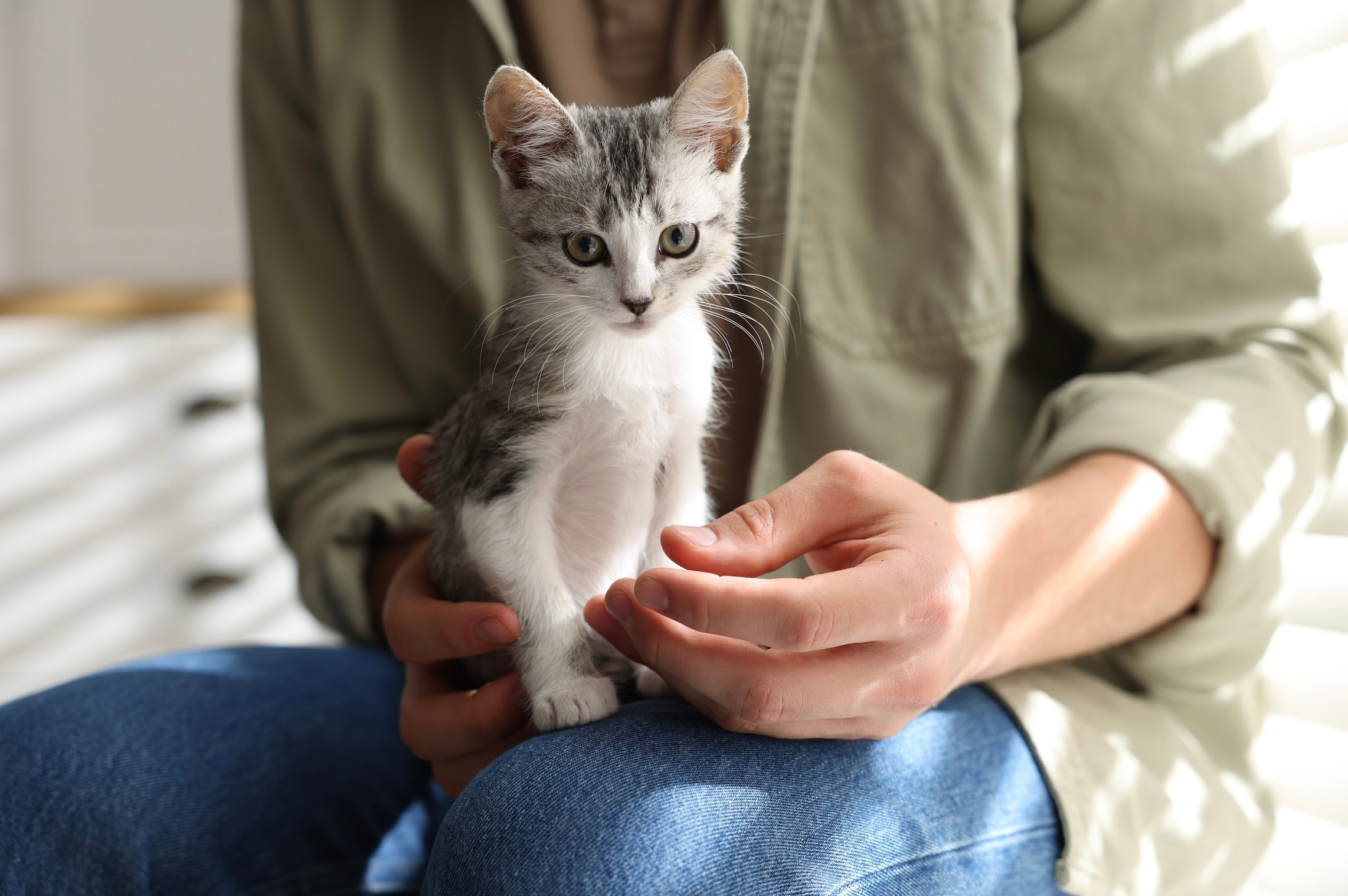Transitioning from a playful kitten to a graceful adult cat is a fascinating journey. As your feline friend pounces and purrs their way through life, you might wonder, At What Age Do Cats Stop Growing? Understanding this growth timeline is crucial for providing the best care at each stage of their development.
 small gray tabby kitten sitting on a woman
small gray tabby kitten sitting on a woman
Generally, cats experience the most rapid growth during their first year of life. Just like human babies, kittens require specific nutrients and care to support this phase. However, unlike humans, cats reach physical maturity much faster. While the most significant growth happens quickly, the complete picture of when cats stop growing is a bit more nuanced.
Understanding the Kitten Growth Stages
To properly answer “at what age do cats stop growing,” it’s helpful to break down their growth into key stages:
- Kitten (0-6 months): This is a period of explosive growth. Kittens are like tiny, furry rockets, rapidly gaining weight and size. They need a diet rich in calories and nutrients to fuel this development. You’ll notice significant changes week by week as they develop from clumsy little furballs into more coordinated youngsters.
- Junior (7 months – 2 years): While the rapid growth spurt slows down, cats continue to mature during this phase. They are still growing, but at a less dramatic pace. This is when they fill out, gaining muscle and reaching their adult size in terms of length and height. By the end of this stage, most cats have reached their full skeletal size.
- Adult (3-6 years): Physically, most cats are considered fully grown by the time they reach 2 years old. However, some breeds, particularly larger breeds like Maine Coons, may continue to fill out and gain muscle mass until they are around 3-5 years old. In this adult stage, the focus shifts from growing taller and longer to maintaining a healthy weight and muscle tone.
Factors Influencing When Cats Stop Growing
While most cats stop growing in height and length by around 12-18 months, several factors can influence this timeline:
- Breed: Breed plays a significant role in determining the size and growth rate of a cat. Smaller breeds like Siamese or Singapura may reach their full size earlier, sometimes by 9-12 months. Larger breeds, such as Maine Coons or Norwegian Forest Cats, are slow-maturing and can continue to grow until they are 3-5 years old.
- Nutrition: Proper nutrition is vital for optimal growth. Kittens need high-quality kitten food formulated to meet their specific needs for calories, protein, and essential nutrients like calcium and phosphorus for bone development. Malnutrition during kittenhood can stunt growth and affect their adult size.
- Genetics: Just like humans, genetics play a crucial role in a cat’s size and growth potential. If the parents are large cats, the kittens are more likely to be larger as well.
- Health: Underlying health issues can impact growth. Parasites or illnesses during kittenhood can hinder development. Regular veterinary check-ups and preventative care are essential to ensure healthy growth.
Adjusting Care as Your Cat Grows
Understanding when cats stop growing is not just about curiosity; it’s about adapting your care to their changing needs. As your kitten transitions into adulthood, their dietary and healthcare requirements will shift.
Nutrition Transition
One of the most important changes is switching from kitten food to adult cat food. Kitten food is specifically designed to be calorie-dense and rich in nutrients to support rapid growth. Adult cat food is formulated for maintenance and to prevent weight gain in less active, fully-grown cats.
- Kitten Food: Higher in calories, fat, and protein. Balanced calcium and phosphorus for bone growth.
- Adult Cat Food: Lower in calories to prevent obesity. Formulated for maintenance of adult health.
Veterinarians typically recommend transitioning to adult cat food around 12 months of age for most breeds. However, for larger breeds, this transition might be delayed until 18 months or even 2 years. Consult with your veterinarian to determine the best time to switch and to choose a vet-approved adult cat food that meets your cat’s specific needs.
Veterinary Care Evolution
Veterinary care also adapts as your cat matures. Kittens require frequent vet visits for vaccinations and parasite prevention, often every 3-4 weeks until they are around 16-18 weeks old. These frequent visits also allow vets to monitor their growth and development closely.
Once your cat reaches adulthood (around 1-2 years), the frequency of vet visits decreases to annual wellness exams. These yearly check-ups focus on preventative care, dental health, and early detection of potential health issues.
Dental Care for All Ages
Dental care is crucial throughout a cat’s life, but establishing good habits early is beneficial. While kittens are less prone to dental disease, kittenhood is the perfect time to introduce tooth brushing.
- Kittens: Focus on acclimating them to tooth brushing for future dental health.
- Adult Cats: Consistent dental care is vital to prevent periodontal disease, which is highly prevalent in adult cats.
Daily tooth brushing is ideal, but even a few times a week can make a significant difference. Regular dental check-ups at the vet are also essential for professional cleaning and early detection of dental problems.
Activity and Supervision Changes
Kittens are renowned for their boundless energy and playful antics. As cats mature, their activity levels may naturally decrease slightly. However, this doesn’t mean adult cats become couch potatoes. They still need exercise and mental stimulation, just perhaps in different forms.
- Kittens: Require lots of playtime to burn energy and develop coordination. Need more supervision due to their curiosity and tendency to explore (and potentially get into trouble!).
- Adult Cats: May prefer shorter, more focused play sessions. Still need enrichment to prevent boredom and maintain physical and mental health. Can be left unsupervised for longer periods as they become more sensible (though still mischievous!).
General Supervision Guidelines:
- Kittens under 4 months: No more than 4 hours alone.
- Kittens 5-6 months: No more than 5-6 hours alone.
- Kittens over 6 months: No more than 8 hours alone.
- Adult Cats: Can be alone for 8-12 hours, but still need companionship and care.
Conclusion
So, at what age do cats stop growing? While the most rapid growth occurs within the first year, most cats reach their full height and length by 12-18 months. Larger breeds might continue to grow until 3-5 years old. Understanding these growth stages and adjusting care accordingly – from nutrition to veterinary attention and daily routines – ensures your feline companion thrives at every age and enjoys a long, healthy, and happy life by your side.

